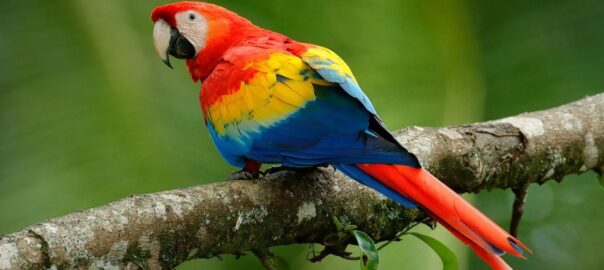Few creatures capture our attention and ignite our wonder quite like the hummingbird. These minuscule dynamos, often referred to as “flying jewels,” flit and hover with breathtaking agility, their iridescent plumage shimmering in the sunlight. But beyond their captivating beauty, hummingbirds boast an array of remarkable adaptations and a fascinating life history that makes them truly unique in the avian world.
Masters of Flight:
The hummingbird’s aerial prowess is legendary. Unlike most birds, they can fly forward, backward, up, down, and even sideways. This incredible maneuverability is made possible by a unique wing structure and physiology. Their wings, unlike the curved wings of other birds, are long and relatively straight, allowing them to rotate nearly 180 degrees at the shoulder. This allows them to generate lift on both the upstroke and downstroke, enabling hovering – a crucial skill for feeding on nectar deep within flowers.
Furthermore, hummingbirds boast an incredibly high wingbeat frequency. Depending on the species, they can beat their wings anywhere from 10 to 80 times per second, creating the characteristic humming sound that gives them their name. This intense effort requires a tremendous amount of energy, fueling their constant need to feed.
Nectar Junkies:
Hummingbirds are renowned for their insatiable appetite for nectar, the sugary liquid produced by flowers. Their long, slender bills and even longer, forked tongues are perfectly adapted for reaching deep into floral tubes. They sip nectar by drawing it up their tongues using capillary action, lapping it up at speeds of up to 12 times per second.
While nectar provides essential carbohydrates, hummingbirds also need protein. They supplement their diet with small insects and spiders, catching them on the wing or gleaning them from leaves and bark. These protein sources are particularly important for growing chicks.
A Rainbow of Colors:
Hummingbirds are celebrated for their vibrant and iridescent plumage. These colors are not due to pigments in their feathers, but rather to the microscopic structures within the feathers that diffract light, creating dazzling displays of color. The angle of light, and the position of the observer, can dramatically alter the perceived color of a hummingbird’s feathers, making them seem to shift and shimmer.
The most familiar example is the iridescent gorget (throat patch) of many male hummingbirds, which can flash brilliant shades of red, green, blue, and purple. These gorgets play a crucial role in courtship displays, as males use their dazzling colors to attract potential mates.
Survival in Miniature:
Hummingbirds face unique challenges due to their tiny size and high energy demands. To conserve energy, they enter a state of torpor at night, drastically reducing their metabolic rate and body temperature. This allows them to survive periods of cold weather or food scarcity.
Despite their small size, hummingbirds are surprisingly resilient. They undertake impressive migrations, traveling thousands of miles between their breeding and wintering grounds. The Ruby-throated Hummingbird, for example, migrates across the Gulf of Mexico, a non-stop flight of over 500 miles.
Conservation Concerns:
Like many bird species, hummingbirds face threats from habitat loss, climate change, and pesticide use. The destruction of forests and meadows reduces the availability of suitable nesting sites and food sources. Climate change can alter the timing of flowering, disrupting the synchrony between hummingbirds and their food plants. And pesticide use can decimate insect populations, impacting a vital source of protein for these tiny birds.
Appreciating the Magic:
Hummingbirds are a testament to the diversity and wonder of the natural world. By creating hummingbird-friendly gardens with native flowering plants, supporting conservation organizations, and reducing our reliance on pesticides, we can help ensure that these enchanting creatures continue to grace our skies for generations to come. So, the next time you see a hummingbird flitting by, take a moment to appreciate its incredible beauty, its remarkable adaptations, and its vital role in the ecosystem. You’ll be witnessing a true marvel of nature.









